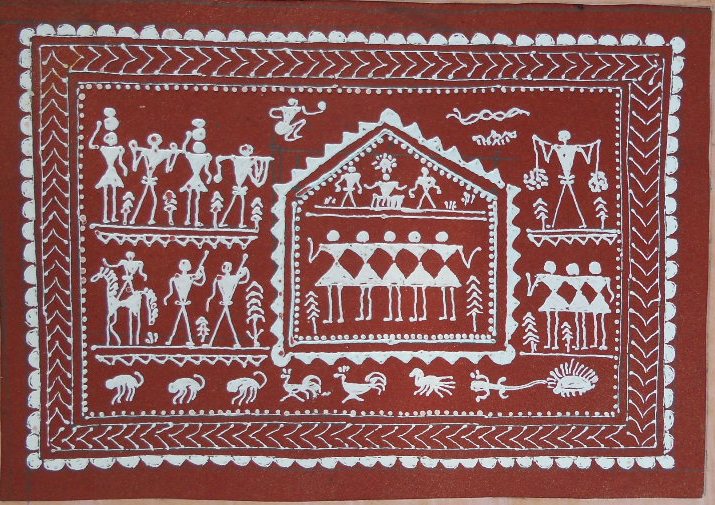Gunupur: The traditional tribal wall painting known as ‘Idital’, an artistic expression of the Saura community’s cultural heritage, has earned global recognition for its unique style and spiritual symbolism. The term ‘Idi’ means “painting” and ‘tal’ means “wall,” signifying its creation on mud or plastered walls of homes.
One of the most prominent forms of tribal art in Odisha, ‘Idital’ is drawn using rice paste and thin bamboo sticks. It portrays various deities and ancestral spirits invoked by tribal families during auspicious occasions.
Members of the Saura tribe offer prayers and sacrifices to these deities, symbolically represented in the paintings, before any ceremony or household rituals.
Also Read: Chief Secy urges partnerships & community-led planning
The art also serves as a medium to pray for recovery from illness and to seek protection from misfortune.
Art enthusiasts regard ‘Idital’ as a living expression of ancient tribal beliefs and the community’s close connection with nature.
The Saura people of Puttasingh in Rayagada district believe that invisible spiritual forces govern the universe, influencing human fortune and wellbeing. When faced with hardship, they create these ritual paintings and offer animal sacrifices, believing it appeases both deities and ancestors.
The paintings often feature symbolic representations of ancestors, who are honoured alongside gods as guiding spirits.
According to traditional belief, invoking their presence through art brings prosperity and harmony to the household.
While ‘Idital’ serves as a medium of worship, it rarely depicts deities directly; instead, it portrays elements of daily life — animals, plants, and human activities — as metaphors for divine forces.
The priest, known as ‘Kudanganmar’, or a female priest, ‘Kudangboi’, conducts the ritual and oversees the drawing of ‘Idital’.
The practice is deeply rooted in ritual purity and timing — paintings are typically created between the months of Phalguna and Baisakh, often during the construction of new houses. Despite its cultural importance, ‘Idital’ art has become rare in recent decades.
It survives mainly in the tribal villages of Puttasingh and Sagada, and to a lesser extent in Jalatar, Tallana, Kulusing, and Chinasari panchayats of Gunupur block.
Each ‘Idital’ is distinguished by its structure: first, a square or rectangular frame is drawn on the wall, within which figures of trees, animals, and humans are painted in intricate detail.
The completed artwork is then consecrated through rituals that include animal sacrifice and offerings of local brew, followed by dance and music. During harvests or festivals, the first yield of crops or fruits is ceremonially offered to the ‘Idital’ before being consumed by the family, continuing a centuries-old tradition that connects the Saura people to their ancestors, nature, and the divine.
